Agenda
Conference Schedule
Day 1 full schedule
July 28, 2023 @ 13:00 - 20:00

Sukhraj Soni
Business HeadBiofuels/Green Chemicals,Spray Engineering Devices Limited
India
ABSTRACT
With increasing requirement of Bioethanol for Blending for usage in vehicals now pressure is on the various measure to reduce OPEX of producing Bioethanol, from Molasses in particular. Low Temperature evaporation technique can be used for concentration of Vinasse, Water recovery from RO rejects, Cooling tower blowdowns. Concentrated Vinasses at 60% solids is being used as fuel in the boiler for generating steam & Power.Present system uses Multiple Effect Evaporators for concentration of solids before burning it in the Boiler using Steam & Power.
In the new technology purpose is achieved with the help of Power only (without Steam ) resulting in Reduction of Steam requirement by 37.77 % , Water saving by 29.66 % & reduction in Green House Gas emission by more than 58
%.

Mohammed Al Taani
Secretary GeneralArab Renewable Energy Commission
Jordan
ABSTRACT

David Ramjohn
CEOAlgEternal Technologies, LLC
USA
ABSTRACT
Humans have used biomass from the earliest known times, as materials for building, clothing, utensils, weapons, and energy; the earliest controlled use of fire was by Homo erectus ca. 1.7 to two million years ago (James et al, 1989) and the earliest fuel was woody biomass. Fast forward to the 4th century BCE, and find that the Chinese were the first to use petroleum as fuel (Deng, 2011). Despite the enormous economic and technological advancements made possible by the use of petroleum, the modern thrust to reduce our dependence on petroleum results largely from the environmental impacts associated with the use and combustion of petroleum fuels. These impacts include increased greenhouse gas (GHG) emissions leading to global warming and consequent climate change, as well as pollution of water and soil due to oil spills. Technically, petroleum is itself a biofuel, having been formed from mostly plant biomass over geologic time periods by the action of pressure and temperature. This ancient carbon, removed from the Earth’s early atmosphere and sequestered in the form of crude oil, is now being returned to the atmosphere; therein lies the dilemma. Until renewable forms of energy such as solar and wind can be used to provide base load supplies of energy, the use of biomass remains the single most feasible alternative for energy production. Additionally, bioproducts from biomass represent a viable regenerative alternative to petroleum-based products, such as plastics, which remain in the environment indefinitely and cause damage to ecosystems and organisms. There are many available sources of renewable biomass, e.g. grasses, trees, food and animal wastes; however, algae biomass can be the basis for blue bioeconomies providing energy and feedstock for bioproducts while simultaneously reducing GHG emissions, rejuvenating soils, and treating wastewater, thereby reversing the damage done over centuries of petroleum use.
Integration of constructed wetlands and microalgal treatment system for simultaneous nutrient recovery and biofuel production

Ram Chavan
Assistant ProfessorMIT ADT University
India
ABSTRACT
The main aim of this study is to treat domestic wastewater in a hybrid Vertical Flow Constructed Wetland (VFCW-4.2 m2) and Microalgal Treatment System (MTS-1 m2). The objective is not only to treat Domestic wastewater (DW) but also to produce value-added products from microalgal biomass. The domestic wastewater was initially treated by VFCW and the VFCW effluent was further phycoremediated by MTS. Canna indica was used for wetland vegetation and resident microalgal consortium from VFCW effluent was used in MTS. The VFCW and MTS was operated at 1 m3/day (HRT-0.25 m3/m2-day, OLR-400 g/m2-day) and 0.03 m3/day (HRT-0.03 m3/m2-day, OLR-400 g/m2- day), respectively. The integrated system was observed to remove 68.9% COD, 77.4% NH4-N, 75.8% TKN and 63.6% PO4-P. The harvested Naive Biomass (NB) was observed to contain 16.7% of lipids (W/W). The Residual Biomass after Lipid Extraction (RBLE) was used as a substrate for ethanol production. The observed yield of ethanol using RBLE as a substrate was 33.4%. NB, RBLE, and Residual Biomass after Lipid and Sugar Extraction (RBLSE) indicated net biomethane yield (mL/g VS) of 211.8, 134.6 and 107.7, respectively. The present study demonstrated an initial attempt of demonstrating a hybrid wastewater treatment system for the production of value-added products in terms of biofuel.

Nour Sh. El-Gendy
ProfessorEgyptian Petroleum Research Institute
Egypt
ABSTRACT
The global depletion of high quality oil reserves and water resources comes in parallel with the worldwide increased inhabitants, elevated industrial and agricultural activities, besides the increased concern with the climate change and environmental pollution. The sustainable development goals aim to solve these problems to cover successfully its three pillars; economy, society and environment. Valorization of wastes into sustainable, biodegradable, and cleaner combustible biofuels are feasibly considered alternative and/or complementary for the traditional transportation fuels. However, there are many bottlenecks in biofuel processing and management of its water consumption and waste byproducts, which increase its overall cost. Application of artificial intelligence, statistical and response surface optimization for biofuel production are very important for decreasing water and feedstock consumption, saving energy, effort and time. The integration of waste biomass valorization into biofuels, nano-biocatalysts and other value added products with the bioupgrading of transportation fuels, and wastewater treatment for its reuse is also very mandatory for achieving zero-waste and maximize the concept of circular economy.
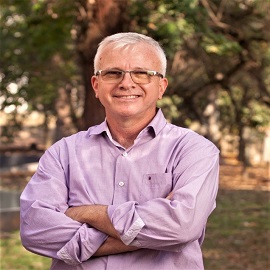
José Bressiani
Feedstock DirectorGraal Bioenergy
Brazil
ABSTRACT
GranBio is an industrial biotechnology company with focus on biomass conversion to biofuels, biochemicals and renewable materials. The Company developed technologies to produce greener products, strongly supporting the reduction in climate changes. GranBio’s owns the biggest 2G Ethanol plant in the world, in Alagoas, Brazil, with 100% proprietary technology being used and process sugarcane straw to produce Ethanol. The adoption of this technology using only half of sugarcane straw in Brazil it is possible to increase 50% the Ethanol production without increase not even one hectare of sugarcane planting area. GranBio also develops an energycane breeding program since 2011 and has registered eleven varieties of Energycane Vertix®, the most competitive biomass in terms of photosynthetic efficiency known. The energycane breeding is based on crosses between access of Saccharum spontaneum (wild types of sugarcane) and modern varieties. The F1 individuals are very vigorous, high yield, high fiber and low sugars in the juice. These individuals are called energycane type 2 and can produce 4 times drier biomass per year than eucalyptus for instance and with low production cost. Additionally, due to the presence of rhizomes and a well-developed root system this type of varieties can be planted in marginal land not competing with food. When we cross these F1 individual with modern varieties we get the energycane Type 1, with are intermediate between energycane type 2 and commercial sugarcane varieties. This type of material can be cultivated with other commercial varieties using the same machinery and the same industrial process and can be allocated in poor environment where commercial varieties doesn’t produce economically. In summary, energycane is the most yield, economic and competitive source of biomass for the tropic and subtropic regions across the world.

Leena Kulkarni
P.hD.,TechnologistPraj Industries
India
ABSTRACT
Hydrogen is considered as the next gen fuel. Production of hydrogen from biomass and industrial wastewater using microbial cultures is a promising, very cost effective and eco-friendly alternative. Obligate anaerobes are central to the anaerobic fermentation process producing high value reduced end products like hydrogen, acids, alcohols, and methane. Hydrogen being a zero-emission gas with high calorific value has attracted researchers worldwide to develop new bioprocesses to enhance its production to cater the current and future demand for fuels. Several strategies of biohydrogen production exists, the most efficient one is via dark fermentation where obligate anaerobes are inevitable. Hence, a better knowledge in the microbiological, biochemical, and molecular aspects of obligate anaerobes is essential for the development of a sustainable biohydrogen production technology. In such scenario, the different strategies of biological hydrogen production and application of obligate anaerobes in efficient conversion of biomass and industrial effluents to biohydrogen is worth exploring. In our group, we consider the strategies to overcome inhibition and enhance production of hydrogen yield via dark fermentation process using obligate anaerobes using sustainable complex feedstocks such as distillery wastewater, rice straw, etc.
Multi-physical models for hydrogen production using NaOH and stainless steel electrodes in alkaline electrolysis cell

IVAN NEWEN AQUIGEH
ResearcherE3M University of Douala
Cameroon
ABSTRACT
The cell voltage in alkaline water electrolysis cells remains high despite the fact that water electrolysis is a cleaner and simpler method of hydrogen production. A multiphysical model for the cell voltage of a single cell electrolyzer was realized based on a combination of current-voltage models, simulation of electrolyzers in intermetent operation (SIMELINT), existing experimental data and data from the experiment conducted in the course of this work. The equipment used NaOH as supporting electrolyte and stainless steel as electrodes. Different electrolyte concentrations, interelectrode gaps, and electrolyte types were applied and the cell voltages recorded. Concentrations of 60 wt. % NaOH produced lowest range of cell voltage (1.15 - 2.67 V), an interelectrode gap of 0.5 cm also presented the lowest cell voltage (1.14 - 2.71 V). The distilled water from air conditioning led to a minimum cell voltage (1.18 - 2.78 V). The water from a factory presented the highest flow rate (12.48 x 10-1cm3/min). It was found that the cell voltage of the alkaline electrolyzer was reduced considerably by reducing the interelectrode gap to 0.5 cm, and using electrolytes that produce less bubbles. A maximum error of 1.5% was found between the mathematical model and experimental model, indicating that the model is reliable.

Sunil Rai
ResearcherIndia
ABSTRACT
Every year, during the post-monsoon season (September-November), extensive agricultural crop residue burning takes place mainly in the northwestern Indian states of Punjab, Haryana, and western Uttar Pradesh,”. “The emissions from the burning of Paddy Straw in Punjab locations travel thousands of kilometers downwind, from west to east,”. Paddy residue is burnt in the fields, emitting large amounts of submicron aerosols and traces gases like carbon dioxide and sulfur dioxide.
Paddy Straw can be utilized as Boiler for many industries and ca be replacement with Fossil fuel (coal, Furnace Oil, HSD etc.).
The biogas cleaning. BTS-MPdry technology for biogas cleaning. An efficient way to remove impurities from biogas.

Joaquín Reina Herdz
CEO & FounderBGasTech
Spain
ABSTRACT
Biogas is a dirty gas it requires prior cleaning before turning into raw material for its use in energy production or other product like Biomethane. The BTS-MPdry is a multifunctional technology for biogas cleaning that delivers a high-level biogas cleaning with low OPEX, is useful too for biogas capture and for that reason can be applied to any biogas production facilities mainly in WWTP and Landfill. This technology is based on the removal impurity technique combination for biogas cleaning. The technology is the result of the R&D work of the BGasTech group, It allows for the removal of water vapor content, siloxanes, halogenated compounds, and H2S by physical chemicals for achieving adequate biogas for its use. It can work both in suction conditions (vacuum) and in impulsion (load) of the biogas stream. This paper presents its operating principle and the results achieved in its application, in WWTP, as well as the benefits provided by the company that has it applied.

Prof.(Dr.) Pradip Lingfa
Former HoDNorth Eastern Regional Institute of Science &Technology
India
ABSTRACT
Energy is the prime mover of economic growth of any country and is vital to the sustenance of modern economies. Future economic growth in crucially depends on the long-term availability of energy from the sources that are affordable, accessible, and environmentally friendly as well. Renewable energy is a basic ingredient for overall sustainable development and a potential to provide energy supplies for an indefinite period of time. However most of the present primary energy requirements in countries are made through fossil fuel like coal, oil and natural gas. But due to its increasing demands and uses there is depletion of the world petroleum reserves coupled with the global environment problems which stimulated the search for alternative sources that is renewable, sustainable besides being cheap and locally available. Among the various alternative energy sources, biodiesel has become the emerging area of research due to its eco-friendly energy source. Biodiesel is power behind the green tomorrow and a key future asset for sustainability.
Synthesis of Zinc Oxide nanoparticles using Fusarium oxysporum to enhance bioethanol production from rice straw
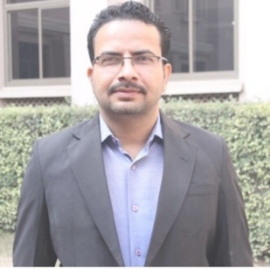
Tejpal Singh
Assistant ProfessorThe NorthCap University
India
ABSTRACT

Ankush Halba
Ph.D. ScholarIndian Institute of Technology Roorkee
India
ABSTRACT
The Indian Himalayan Region (IHR) region generates about 40 million metric tonnes (MMT) of forest biomass (or residues) and 27 MMT of forest biomass surplus annually [1]. The biomass surplus is the biomass left after the various utilities, such as animal feeding, bedding material, domestic fuel, roof thatching, composting, soil incorporation, and sold to industry or other farmers. The available forest biomass surplus has the potential to produce 980 GWh/MMT annually [2]. Gasification seems to be a pathway for extracting the electric potential and generating clean cooking fuel (biochar) from forest biomass surplus. Gasification is a thermochemical process that transforms biomass into syngas or producer gas, char, and tars. The product gas obtained from biomass gasification can be effectively utilized to generate electricity by a modified gas engine coupled with an alternator. The char produced from gasification can be used in various ways, such as clean cooking fuel, soil enhancer, and construction material [3]. Decentralized biomass gasification could provide reliable electrification in rural or remote areas, precisely where grid electricity is not accessible with minimum transmission and distribution losses, better usage of local resources, and lower biomass transportation costs [4]. Moreover, it can enhance the livelihoods and well-being of Himalayan people by creating employment opportunities, reducing pollution and fire hazards. However, an efficient biomass supply chain is required to improve the utilization and conversion of forest biomass into bioenergy. The optimal architecture of the supply chain is crucial for providing the most outstanding service to consumers at the lowest possible cost. A typical biomass supply chain may contain a combination of the following processes: field preparation, cultivation, harvesting, storage, field/forest transport, road transport, and biomass utilization at the production station [5]. This review study presents a basic framework for forest biomass supply chain to promote decentralized biomass gasification.
Day 2 full schedule
July 29, 2023 @ 11:00 - 14:00
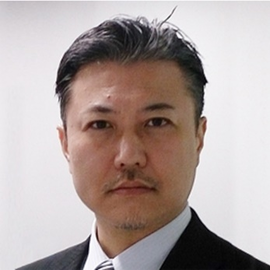
Soshu Kirihara
ProfessorOsaka University
ABSTRACT
In stereolithographic additive manufacturing (STL-AM), 2-D cross sections were created through photo polymerization by UV laser drawing on spread resin paste including nanoparticles, and 3-D models were sterically printed by layer lamination. The lithography system has been developed to obtain bulky ceramic components with functional geometries. An automatic collimeter was newly equipped with the laser scanner to adjust the beam diameter. Fine or coarse beams could realize high resolution or wide area drawings, respectively. As the row material of the 3-D printing, nanometer sized metal and ceramic particles were dispersed into acrylic liquid resins at about 60 % in volume fraction. These materials were mixed and deformed to obtain thixotropic slurry. The resin paste was spread on a glass substrate with 50 μm in layer thickness by a mechanically moved knife edge. An ultraviolet laser beam of 355 nm in wavelength was adjusted to 50 μm in variable diameter and scanned on the spread resin surface. Irradiation power was automatically changed for an adequate solidification depth for layer bonding. The composite precursors including nanoparticles were dewaxed and sintered in the air atmosphere. In recent investigations, ultraviolet laser lithographic additive manufacturing (UVL-AM) was newly developed as a direct forming process of fine metal or ceramic components. As an additive manufacturing technique, 2-D cross sections were created through dewaxing and sintering by UV laser drawing, and 3-D components were sterically printed by layer laminations with interlayer joining. Through computer-aided smart manufacturing, design, and evaluation (Smart MADE), practical material components were fabricated to modulate energy and material transfers in potential fields between human societies and natural environments as active contributions to Sustainable Development Goals (SDGs).
Land, Water, and Wind Watershed Cycle: a strategic use of water, land and wind for climate change adaptation

Julian Hunt
Postdoctoral ResearchIIASA
Austria
ABSTRACT
The increase in population and the improvement of life standards are stretching the boundaries between water-energy-land management, and demanding innovative and holistic solutions. This article proposes an approach for increasing the water availability of two or more water basins taking into consideration land use and wind patterns, and was named Land, Water, and Wind Watershed Cycle (L3WC). This approach can be applied to one watershed or a combination of watersheds. In the first case, if wind patterns blow mainly in the opposite direction of the main river flow, plantations with high water demand should be focused on the lowest part of the basin. The transpired moisture would then return to the basin with the wind and possibly increase the water availability of the basin. Applying this method to a series of basins, water is transposed from one basin to another, used for irrigated agriculture, returned to the atmosphere with evapotranspiration and pushed back to the basin where the water was extracted by the wind. Case studies of this methodology are presented in the São Francisco basin and between the Tocantins, Amazonas, and Paraná basins and the São Francisco basin in Brazil. The São Francisco basin was selected because it is located in a dry region, its flow has considerably reduced in the past decade and because the trade winds blow constantly from the ocean into the continent all year around. L3WC is a strategy to plan the allocation of water consumption in a watershed, taking into account wind patterns to support the sustainable development of a region. It has the potential of increasing water availability and creating a climate change adaptation mechanism to control the climate and reduce vulnerability to climatic variations.
In-silico approach to enhance the production of alcoholic biofuels in solventogenic Clostridia: Recent progress in reconstruction of genome-scale metabolic models
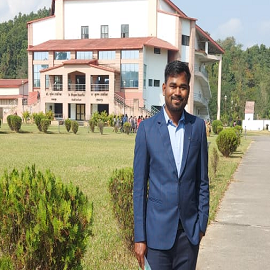
Karan Kumar
PM Research FellowIndian Institute of Technology Guwahati
India
ABSTRACT
Genome-scale metabolic models (GSMs) are gradually gaining interests and being put forth for several microorganisms in order to explore their metabolic capabilities for producing various chemicals and fuels. A good quality GSM is very much essential to understand the metabolic capabilities of an organism and to develop the metabolic engineering strategies for strain development. In this study we have performed performed the detailed comparison of selected representative GSM models for solventogenic Clostridia contrasting their metabolic repertoire. Furthermore, we have also reconstructed GSMs for two model Clostridium strains viz., Clostridium acetobutylicum ATCC824 and Clostridium pasteurianum ATCC 6013 and performed constraint-based analysis on these two models. Resultant models from our study were of good quality in terms of stoichiometric consistency and annotations compared to available models. These models will aid to understand the metabolic capabilities of aforementioned solventogenic model organism and will help to develop the metabolic engineering strategies for strain development.
Optimization study of the production of biogas from the mesophilic anaerobic co-digestion of vegetable and fruit waste from neighborhood markets and the stretched grass
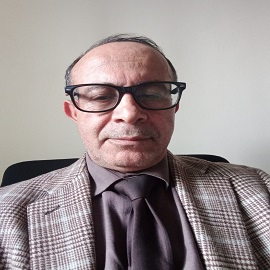
Mohamed TAHIRI
ProfessorHassan II University of Casablanca
Morocco
ABSTRACT
The biomass present in vegetable and fruit waste from neighborhood markets represents a very significant potential for putrescible and fermentable organic matter. Its release in nature or in garbage is a considerable loss and a real risk to human health and the environment.
Casablanca is the first city in terms of number of population in Morocco (~ 4,3 million inhabitants). It has enormous potential for organic waste. Domestic organic waste, waste from daily neighborhood markets, woven grass in green spaces; are an abundant and renewable source of putrescible organic matter.
This present work will focus mainly on the study of the anaerobic fermentation of waste from neighborhood markets and of the stretched grass of green spaces in the city as a co-substrate. This waste, rich in organic matter, promotes the production of biogas at yields exceeding 70% in methane. The co-digestion of the mixture balances the C / N ratio due to the change in the nature of fruits and vegetables with the seasons. This contributes to the improvement of the anaerobic digestion process in mesophilic mode.
In this work, we will present the different chemical compositions of the different substrates used in the digester, describe the working conditions to optimize the methane yield and reduce the rate of inhibitor gases (Ammonia and hydrogen sulfide). We will also focus on the kinetic study of the mesophilic anaerobic digestion of these substrates.
The study has shown that the anaerobic digestion of this substrate mixture allows a stabilization of the pH, an acceptable C / N ratio and a decrease in the level of ammonia and sulfur.

Ambika H D
EntrepreneurGermany
ABSTRACT
Plant and algal oils are among the most energy-dense naturally occurring compounds that can be used as feedstocks for biofuel products. Microalgae have been considered as promising sustainable feedstock for supplanting fossil fuels since the 1970s. Advantages of microalgae over other biofuel feedstocks include high oil yield, short generation times, low agricultural land requirements, reduced fresh water needs, and reduced greenhouse gas emissions during algal cultivation. Nannochloropsis is attracting renewed interest due to member species’ potential application as sustainable feedstocks in biofuel production and high-value compounds. This genus is rapidly emerging as a model for research on algal biofuel production as it is predicted to have great potential in the bioenergy sector. This presentation reveals advances in the aspects of Nannochloropsis growth, cultivation systems, harvesting and biorefinery technologies associated with lipid production (mainly neutral lipids).
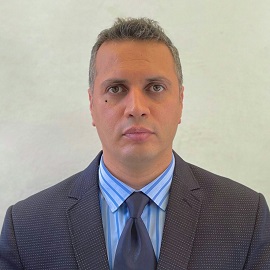
Morteza Jafarsalehi
ResearcherKashan Univerity of Medical Science
Iran
ABSTRACT
Wastewater treatment plants are among the major facilities that consume considerable energy in cities . Consumption of fossil fuels to supply energy for these facilities, in addition to spending money, emits greenhouse gaseous. Therefore, Developing energy self-sufficiency processes lead to economic savings by increasing biogas production in anaerobic digestion of sewage sludge as well as preserving the environment. The purpose of this study is to review the solutions to increase the production of biofuels in wastewater treatment plant, including bio-methane and bio-hydrogen. recovery of methane from anaerobic digestion of waste materials collected in wastewater treatment plant such as grease trap sludge and cellulosic solids collected in fine screens is one of the new bioenergy supply. Co-digestion of sewage sludge with municipal organic waste and microalgae produced in photo-bioreactors can increase the biogas production. Reuse of agricultural wastes for sludge digestion whit increasing biogas production and compost production and lead to a circular economy and nutrient recycling. The process of direct interspecies electron transfer (Diet) by adding metal nanoparticles and carbon based conductive material, injecting carbon dioxide from flue gas into the digester and addition of biochar can also improve the efficiency of anaerobic digesters. The production of bio- hydrogen and the recovery of soluble methane from the digestive effluent also contribute to energy self-sufficiency in the treatment plant. As a result of the present review, it can be concluded is shown that co-digestion of municipal and industrial organic waste in sludge digesters with the help of novel anaerobic process technologies can enhance the energy production (electrical and thermal) during wastewater treatment by the enhancement of bio-methane production.



